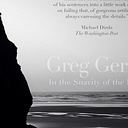Introduction to Passages and Sentences and Lines

Passages and Sentences and Lines
Featuring the work of Joseph McElroy, James Salter, Elizabeth Hardwick, Herman Melville, Guy Davenport, Mark de Silva, Gabriel Blackwell, Christina Tudor-Sideri, Henry James, Proust, Gertrude Stein, Marianne Moore, William Hazlitt, and others
Introduction
This book began as a simple rebuttal to an article on James Salter in a prominent US periodical. A friend shared this piece with me and I came upon a spate of sentences inflaming my ire. The writer opined that pulling an illustrative sentence from the whole of a book wasn’t a great practice — the color of the highlighted bit would fade in the light of plain day. This contravened everything I’d come to believe in after taking most of William Gass’s theories of fiction for my own — the most prominent of these being that there is a world within the word and a soul inside the sentence, overlayed by the belief that the temple of texts, with all the great books in the vast library that people circulate to varying degrees with themselves and others, is, as Borges taught him, contemporary.
Trafficking on that nebulous surface of fire and ice once called Twitter, I have come to believe in the sacredness of the screenshot for pointing out to denizens the triumphs of some textual parts of the whole (and sometimes just a whole short poem) — flourishes as summer blooms for the all-year mica-glitter, the mountain of pages that is the book. In these passages, sentences, or lines of verse we simultaneously have foundation, decoration, and utilitarian purpose. Gass might use a spindle diagram to highlight and isolate the parts of a sentence to see the structures of musical prose better and point them out to some people for the first time. Sections, sentences, lines, metaphors — they always speak to us so that we underline, highlight, or copy them down, making note that they hold marvels for us, even if we don’t write them down but only file them in memory to live rent-free in our mind. We can’t hold the whole painting or sculpture in our field of sense at once so we take smaller parts — the forefront or the backside of Michelangelo’s Dying Slave. These parts have been shaped to align with the overall — they that have a field of force all their own within the larger structure of the whole, which contains an all-abiding field of force.
Even before the advent of social media, the digital world began to break things down to shorten attention spans in the 80s and 90s with cable TV, video games, cell phones, and, on the literary side, a larger attention to very short fiction, earmarked by the highly successful and influential anthology, Sudden Fiction. The book featured a few writers who took Gordon Lish and his recursion, attack sentences, and more miniature stylistics as a mentor, including Raymond Carver, Barry Hannah, Grace Paley (though more for informing Lish’s aesthetic), and Mary Robinson, plus the man himself. We have been consciously shortening texts for forty years, and today, longer books are seen as an affront to the reader, while the shorted works, often containing a kind of ellipsis style, are more and more celebrated — out of Don DeLillo’s six published “novels” in this century, three are under 128 pages, pages themselves having fewer lines of text per page to bulk the page count. Yet, a part of me still believes Stanley Elkin’s smart-aleck riposte to “Less is more”: “More is more.” True, but Rilke’s The Notebooks of Malte Laurids Brigge is a little over two-hundred pages, but it feels like something almost assuming grand Dostoevsky-length — without the dialogue. There are many more examples and surefire exceptions, which only strengthens the case for the each and every sentence being the most important thing in the world at the time of reading — and for the memory of each and every sentence before the current one being read to get transfixed in the process of reading the entire book.
This project might seem to some a giving up or giving in to the zeitgeist that hungers not after reality but the tartly sweet twitter putdown or what used to be called the apercu. We think in streams of these short sharp shocks — what will get attention, what will cut to the quick — and I reflect these passages in a short form, with a page or two of commentary. I want to pinpoint how something is always shining through — the lines of Christine Schutt and every author all go back to their first sentences and in this way every sentence following the first takes from that gene pool. Schutt’s oft-quoted method: “Each sentence is extruded from the previous sentence; look behind you when writing, not ahead. Your obligation is to know your objects and to steadily, inexorably darken and deepen them.” In essence, I cast the net, saying, You can look wherever you want to, look over the whole text, but everything is connected to another. The line on page eight will wink at the one on page two-hundred eighty-eight and so on. The same soul made each sentence, but each sentence has a soul that pumps the blood of the entire all-encompassing one underpinning the work of art.








